Discover how a bimodal integration strategy can address the major data management challenges facing your organization today.
Get the Report →Feed Google Sheets Data into FineReport
How to set Google Sheets data as a JDBC data source in FineReport.
The CData JDBC Driver for Google Sheets fully implements the JDBC standard and can provide Google Sheets data connectivity to a wide variety of BI, reporting, and ETL tools and custom applications. In this article, we explain how to set Google Sheets data as JDBC data source in FineReport and view Google Sheets data as a table in the Report Designer.
Set Up a JDBC Data Source of Google Sheets Data
Follow the instruction below to set Google Sheets data as a FineReport database connection.
- Copy the cdata.jdbc.googlesheets.jar file from the lib folder in the CData JDBC Driver for Google Sheets installation directory to the lib folder of the FineReport installation directory. You will need to copy the cdata.jdbc.googlesheets.lic file as well.
- From the Server tab, select Define Data Connection, click to add a new connection, and click JDBC.
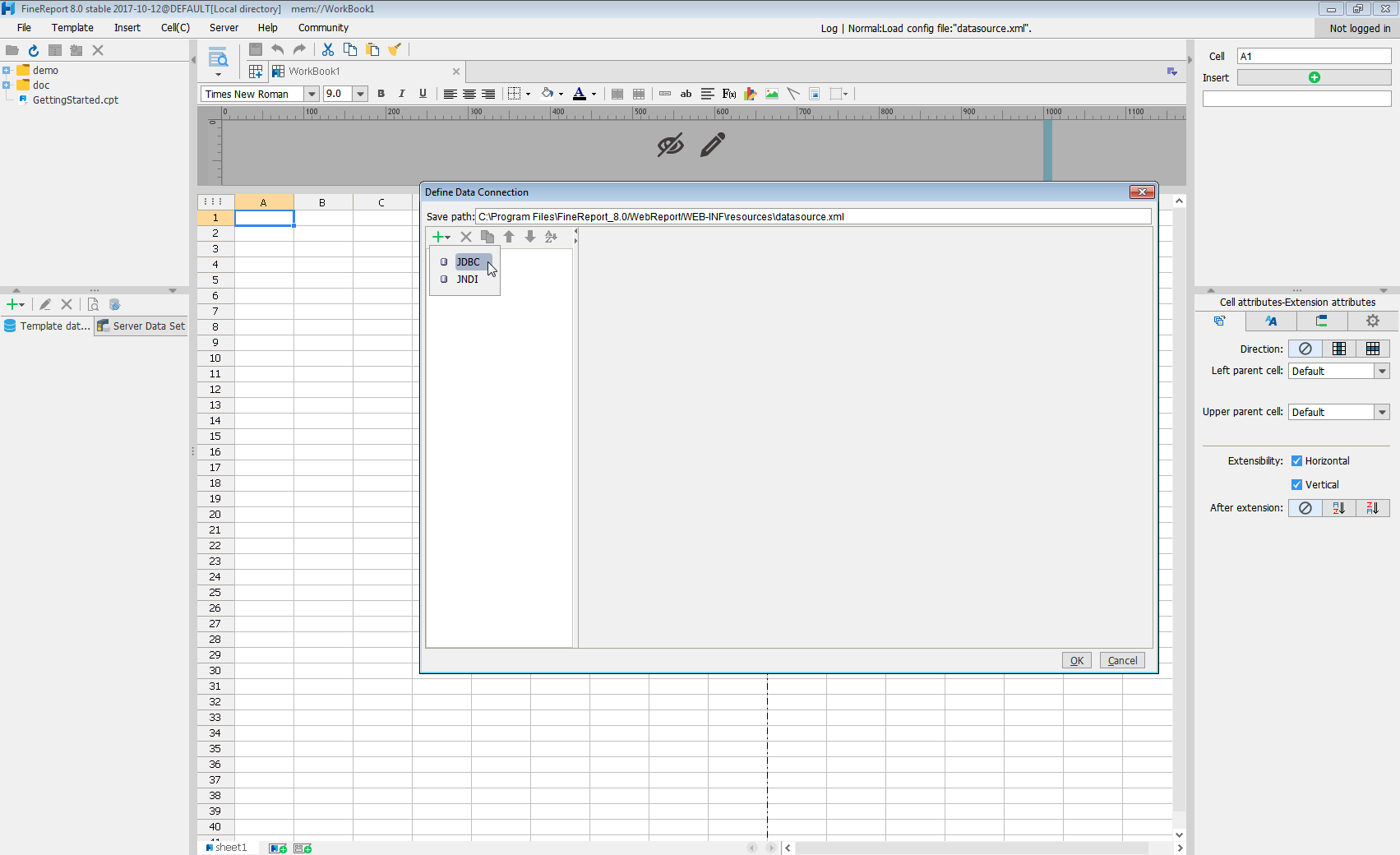
Next we will set up the data connection definition in the window.
- Database: Others
- JDBC Driver: cdata.jdbc.googlesheets.GoogleSheetsDriver
-
URL: A standard JDBC connection string using semicolon-separated connection properties.
You can connect to a spreadsheet by providing authentication to Google and then setting the Spreadsheet connection property to the name or feed link of the spreadsheet. If you want to view a list of information about the spreadsheets in your Google Drive, execute a query to the Spreadsheets view after you authenticate.
ClientLogin (username/password authentication) has been officially deprecated since April 20, 2012 and is now no longer available. Instead, use the OAuth 2.0 authentication standard. To access Google APIs on behalf on individual users, you can use the embedded credentials or you can register your own OAuth app.
OAuth also enables you to use a service account to connect on behalf of users in a Google Apps domain. To authenticate with a service account, you will need to register an application to obtain the OAuth JWT values.
See the Getting Started chapter in the help documentation to connect to Google Sheets from different types of accounts: Google accounts, Google Apps accounts, and accounts using two-step verification.
Built-in Connection String Designer
For assistance in constructing the JDBC URL, use the connection string designer built into the Google Sheets JDBC Driver. Either double-click the JAR file or execute the jar file from the command-line.
java -jar cdata.jdbc.googlesheets.jarFill in the connection properties and copy the connection string to the clipboard.
![Using the built-in connection string designer to generate a JDBC URL (Salesforce is shown.)]()
When you configure the JDBC URL, you may also want to set the Max Rows connection property. This will limit the number of rows returned, which is especially helpful for improving performance when designing reports and visualizations.
A typical JDBC URL is below:
jdbc:googlesheets:Spreadsheet=MySheet; - Click Connection pool attributes and set Test before getting connections to No.
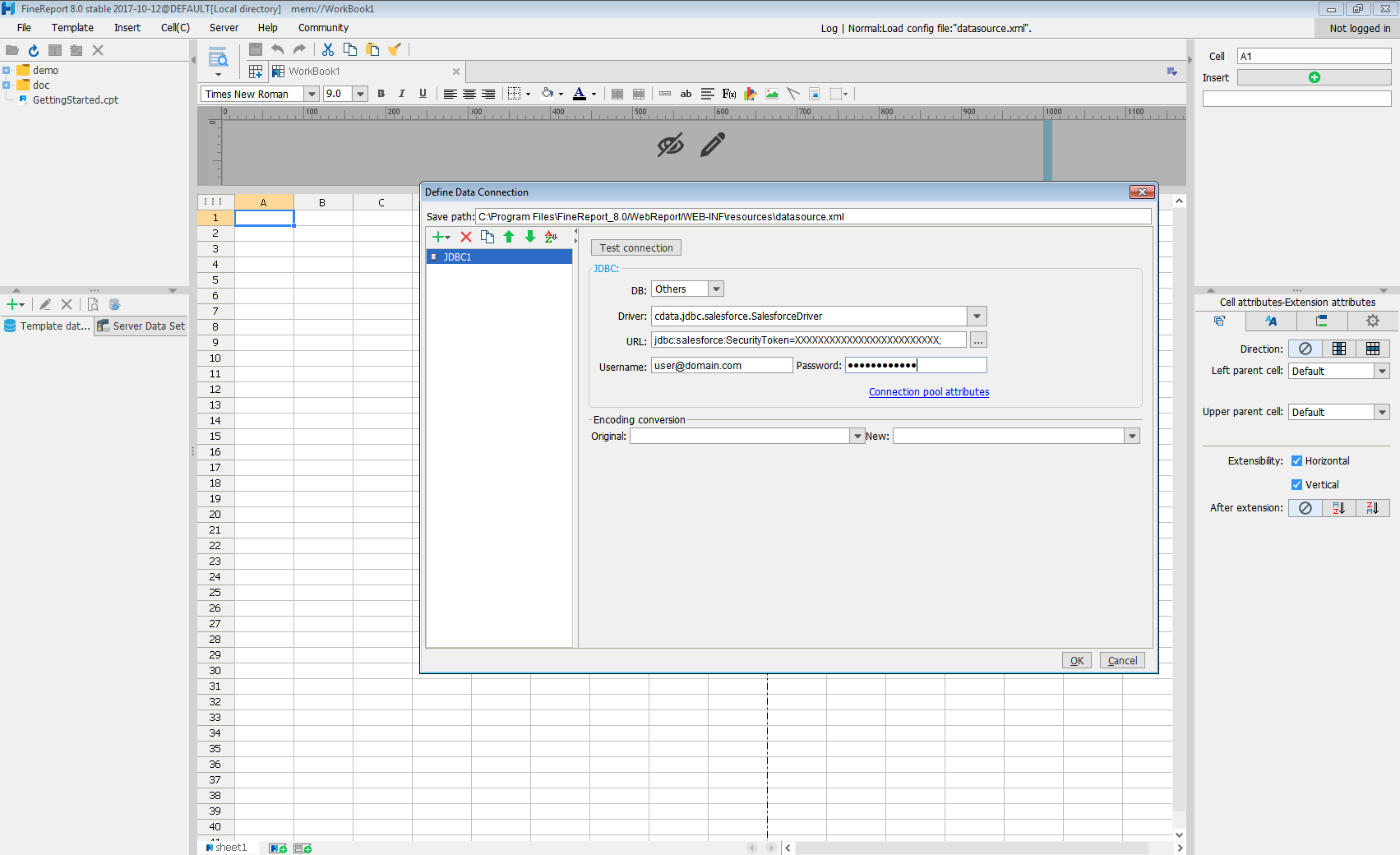
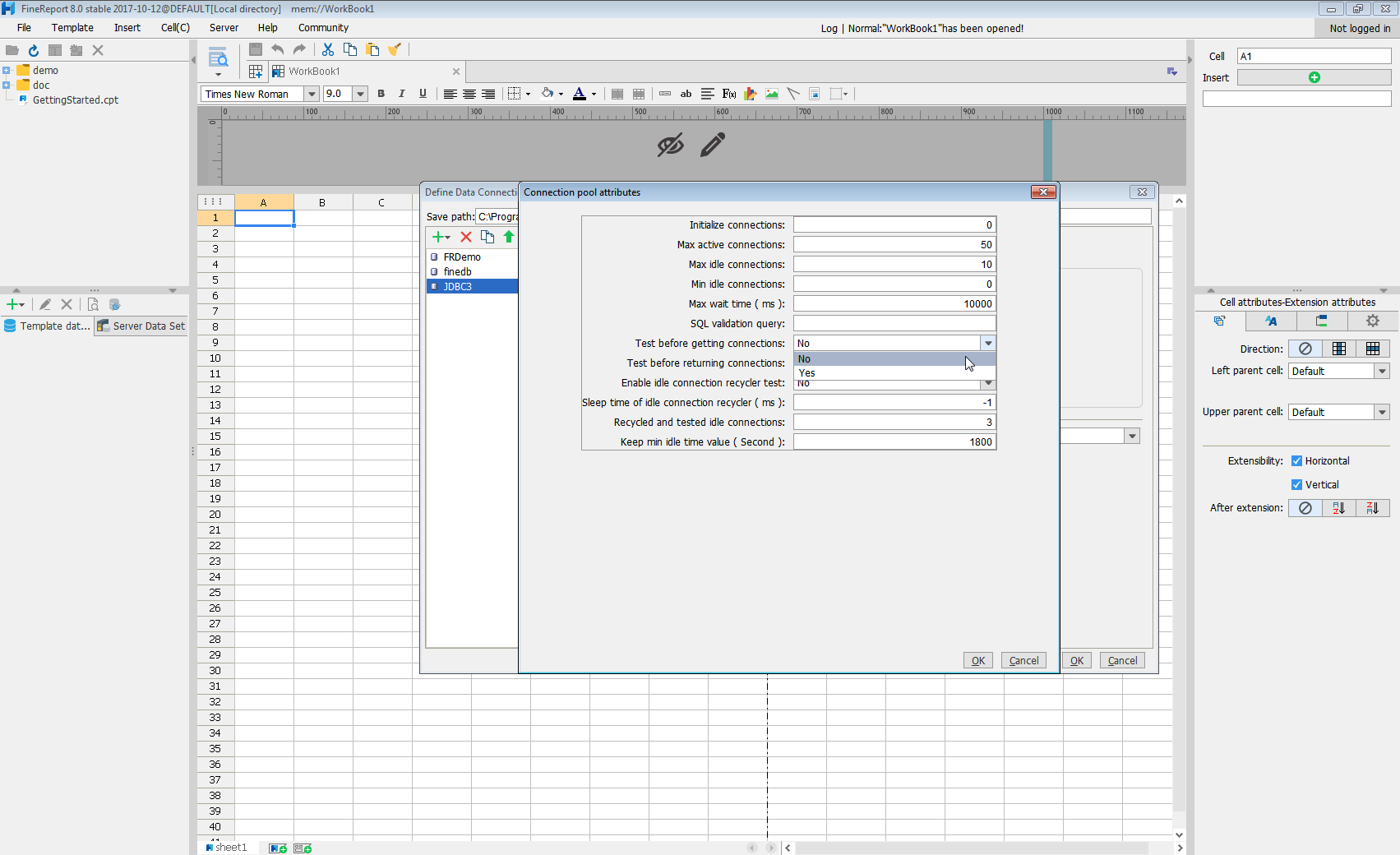
Click Test connection to ensure you have configured the connection properly. With the connection to Google Sheets set up, you can use it as FineReport data source.
Select Google Sheets Data in the Report Designer.
- Click to add a new template data set and select DB query to open the database query window.
- Choose the JDBC connection that you created from the dropdown list.
- The Google Sheets entities will appear as tables on the left pane.
- Write a SELECT statement for the Google Sheets data tables and columns that you want to load.
- Click preview and data is shown as table.
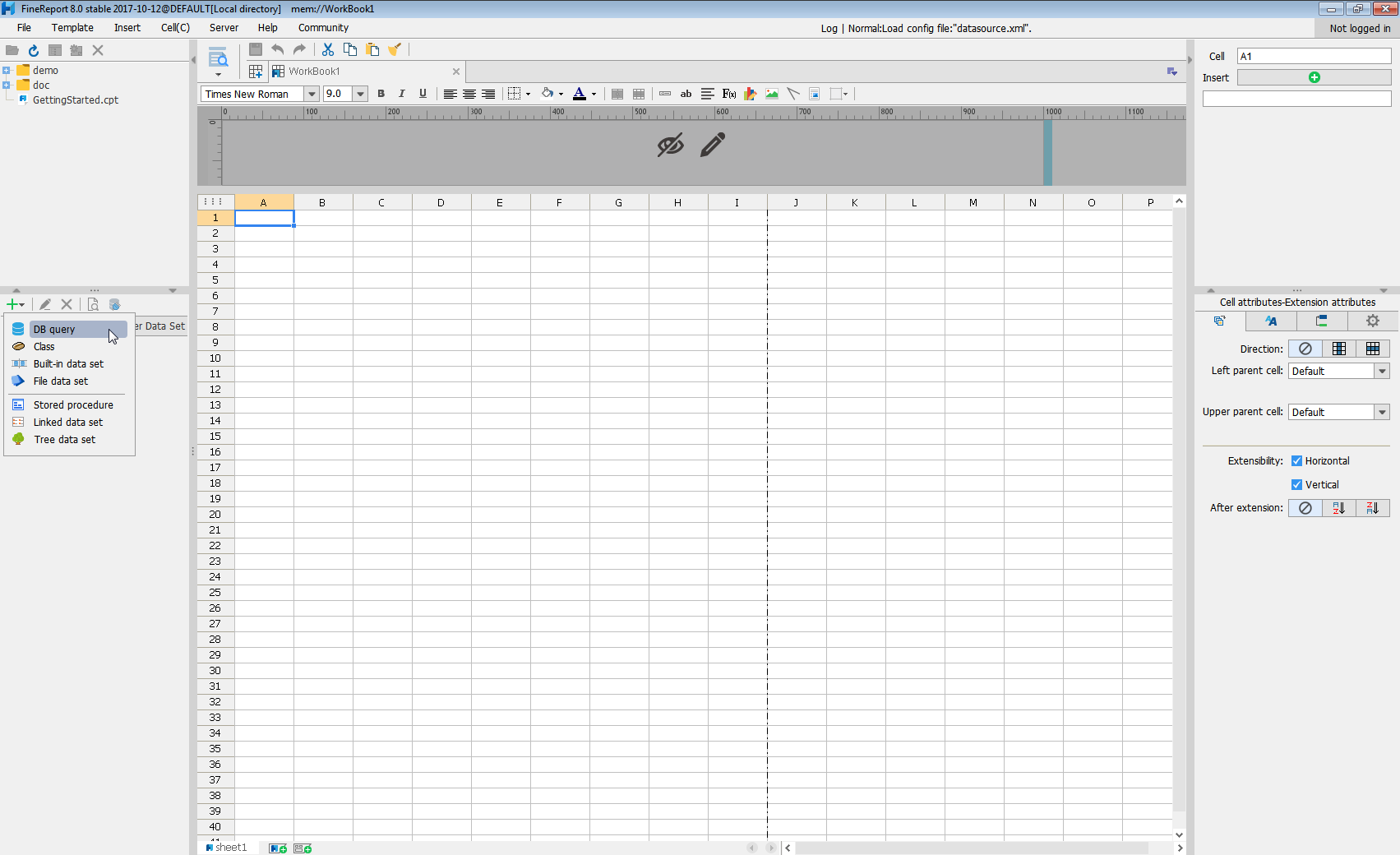
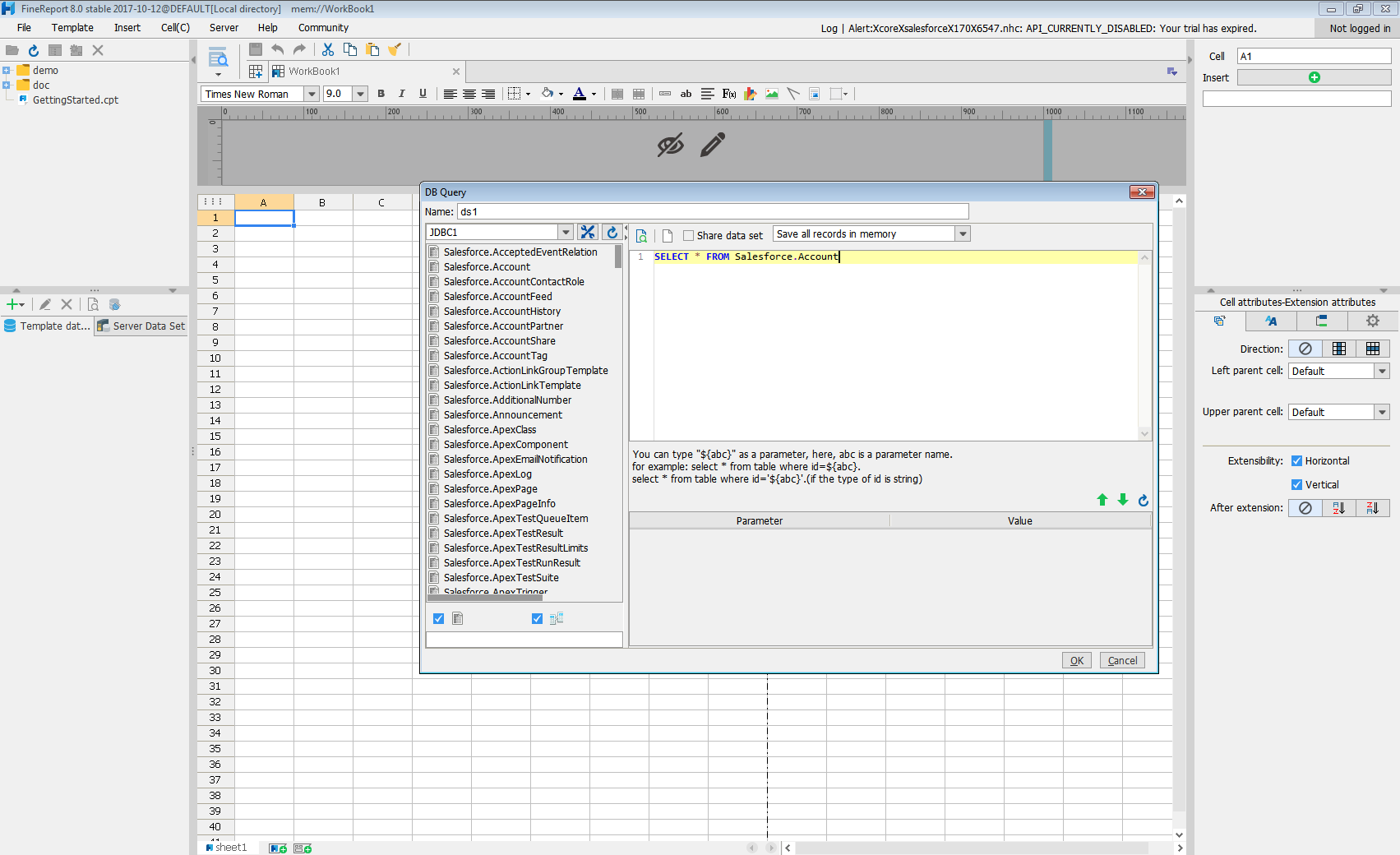
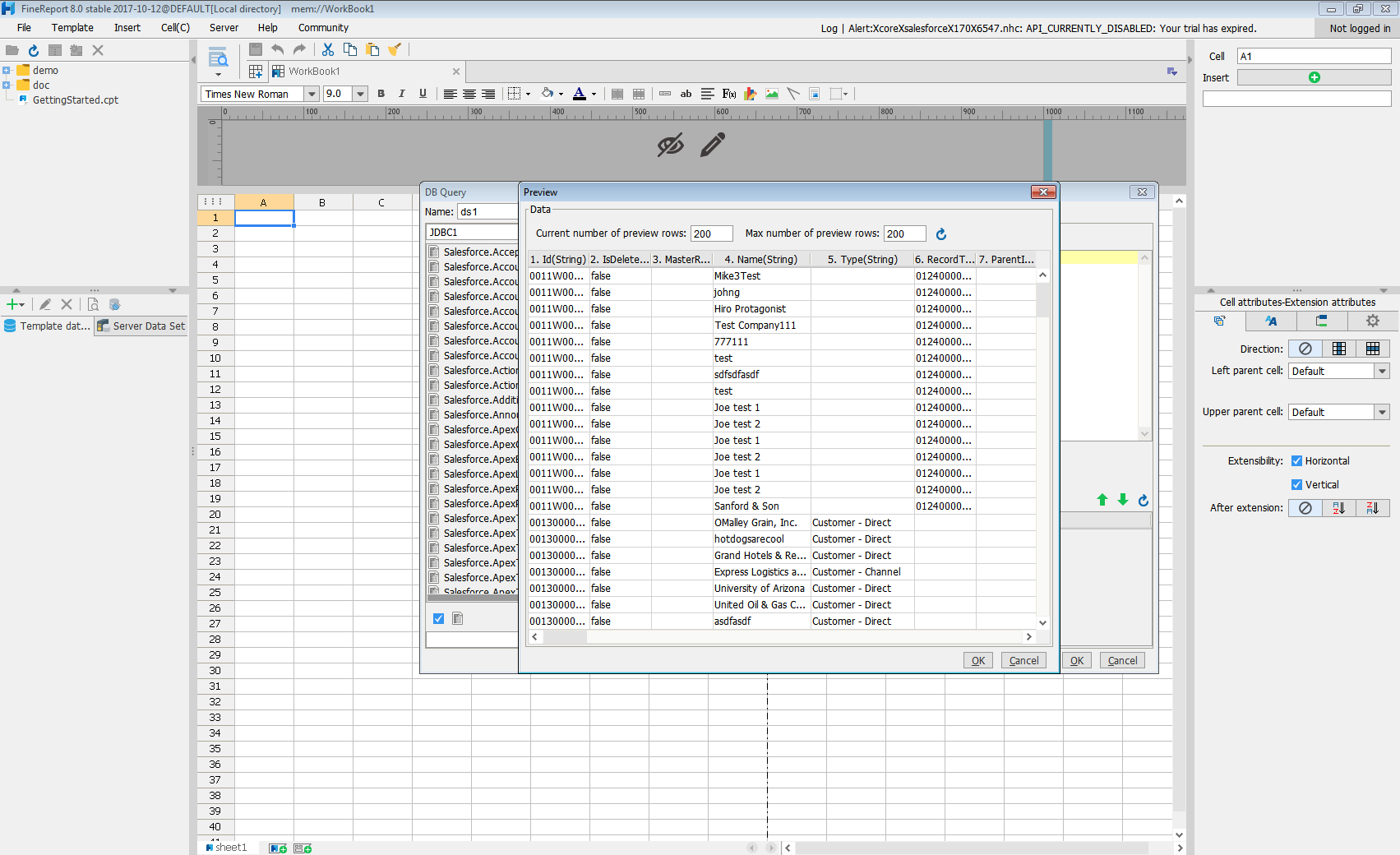
With these simple steps, Google Sheets can be used as a JDBC data source in FineReport.







